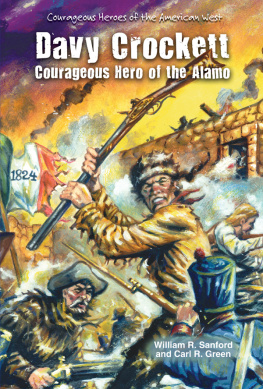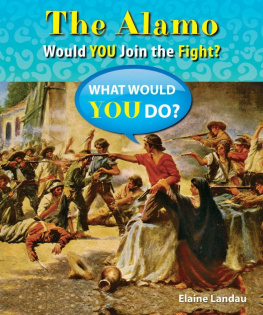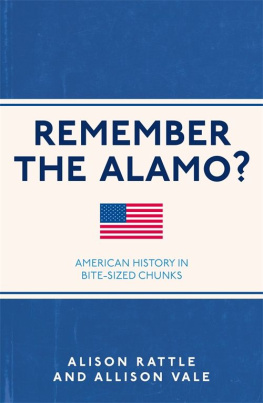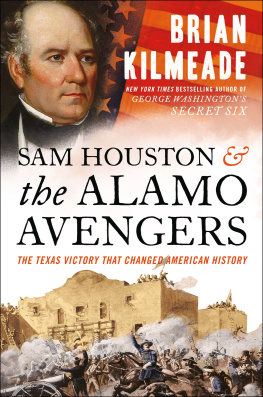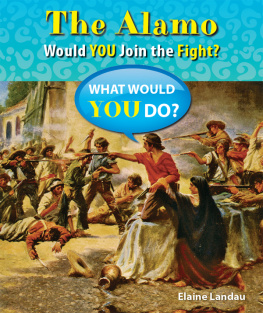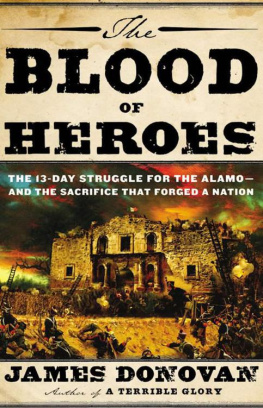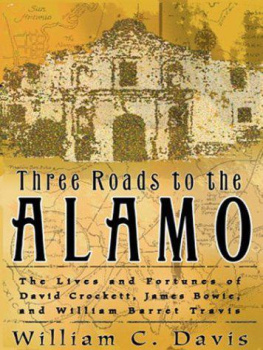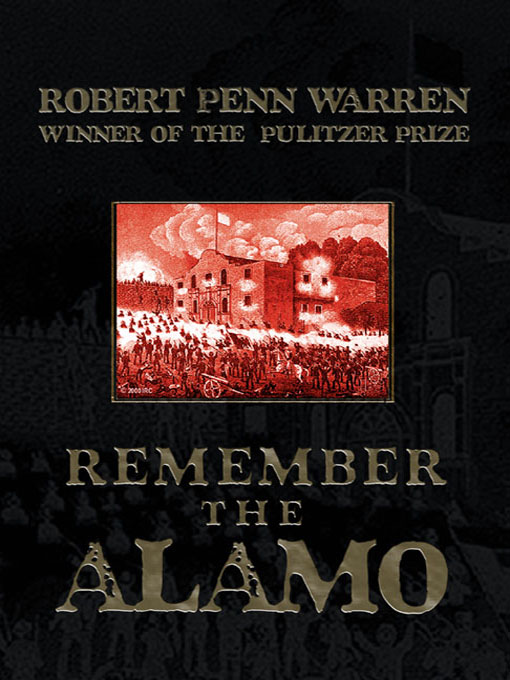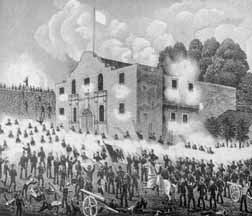1
HOW THE ALAMO GOT ITS NAME
The story of the Alamo is a story of courage. It is a story of the simplest kind of courageof a bitter and unflinching fight against overwhelming odds, to the last man.
It is also the story of how Texas, which was once part of Mexico, became an independent nation. And because the independent Republic of Texas, with its Lone Star flag, became later a state in the United States, the story of the Alamo is one of the great American stories and belongs to all of us. To appreciate this story, we have to know a little about what had happened in the wild country of Texas before the time of the Alamo, and what the people were like who came into that wild country.
In 1803 the United States was a great deal smaller than it is now. Florida and the Southwest, from Texas to California, belonged to Spain. All the rest of the land west of the Mississippi River was held by France, which had gotten it earlier from Spain. In 1803 Napoleon, who ruled France, needed money for his wars; so he sold to Thomas Jefferson, as President of the United States, all the French territory. This included the present state of Louisiana and the main part of the western and northwestern country to the Rocky Mountains. The whole territory went under the name of Louisiana.
Spanish territorySpanish Texasnow lay on our western border. It was a wild country, for though the Spaniards had held the region for about three hundred years, they had not been able to settle it. They had, of course, tried. They had sent in missionaries friars of the order of St. Francisto convert the Indians to Christianity. The friars would build missions. There would be a barracks at a missiona presidio, they called it in Spanishfor soldiers to protect the friars. The hope was that the Indians would get converted and consent to settle down as farmers and workmen around the mission. Then white settlers would come in and towns would grow up. This plan had worked very well in settling Mexico. But it did not work at all in Texas.
For one thing, the Texas country was separated from Mexico proper by hundreds of miles of desert and mountain. For a second thing, most of the Texas Indians were very tough Indians. (The Karankawas on the Gulf Coast were enthusiastic cannibals, and the Comanches and Apaches were great horsemen and fighters. The Apaches even went so far as to invite the Spanish to come in and found a mission; then, when the Spanish had done so, the Apaches looted it and killed the occupants.) For a third thing, those tribes that did let themselves be converted were a worthless lot. At the presidio of San Antonio, at Bexar where the Alamo stood, a number of Indians did settle, but even the missionaries agreed that they were stupid and filthy.
In spite of all these difficulties some sort of settlement was finally made in Texas. Bexar was the biggest and most important place, the capital of the province of Texas, and the center of our story. The Spanish government had made a special effort to settle Bexar. They had brought in some families from the Canary Islands and had even forcibly imported immigrants from Mexico. But many of these people quickly lost their civilized qualities and their ambition, and werent much better than the ragtag and bobtail of garrison soldiers or the converted Indians.
Bexar was about what you might expect from such settlersa few decent buildings where the few more intelligent and decent citizens lived a civilized life, and a huddle of shacks and huts. The most impressive of the buildings was what we know as the Alamo. Then it was known as the Mission of San Antonio de Valero. It consisted of a stone building, a chapel, rooms for the friars, workrooms for Indian women, a storeroom, an inner court, and a walled plaza with the adobe huts of converted Indians.
By 1793 the Mission Valero, as it was called for short, had ceased to be a religious establishment. After nearly a century of missionary work, there were only forty or so converts, and they werent a kind to be proud of. The mission itself was in bad repair, the walls beginning to crumble and debris to collect in corners. The friars had failed and gone away, and the wild, unconverted horse Indians ranged over the Texas country, even to the outskirts of Bexar.
In Bexar there were now fewer than 2,000 inhabitants, and only a few hundred of these were listed as Spanish, the rest being Indian or of mixed blood. As for the rest of Texas, if we dont count the wild Indians and the small garrisons of troops, there were only about 1,000 people. This was the way things stood when, in 1803, the Louisiana Purchase brought the United States to the border of Spanish Texas.
How did the Mission Valero get the name of Alamo?
The word alamo in Spanish means cottonwood treea kind of poplar. According to the report handed down in the neighborhood of San Antonio, the grounds around the old Mission Valero once had a grove of cottonwoods along the ditch that supplied the water, and so after the place ceased to be a mission, it gradually took on the name Alamo.
There is another explanation of the name. In 1802 the Spanish government decided to send some reinforcements of troops to Bexar for protection against Indian raids. The troops chosen were a seasoned outfit called the Flying Company of San Carlos de Parras, which had been stationed at a place in North Mexico called the Pueblo de San Jose y Santiago del Alamo. The troops had been accustomed to call that place the Alamo.




